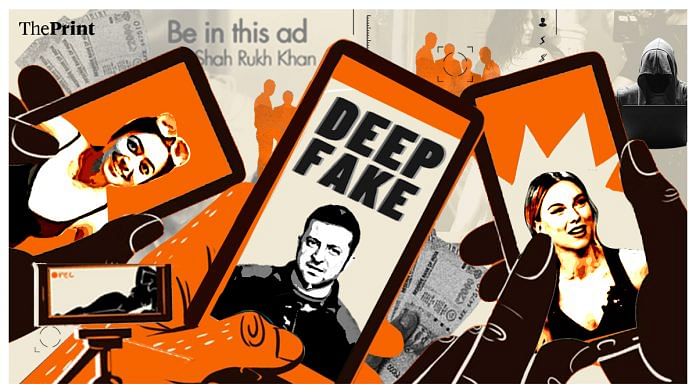The Ministry of Electronics and Information Technology released a set of changes to the Information Technology Intermediary Guidelines and Digital Media Ethics Code Rules on 22 October 2025. This is India’s first big step to deal with the dangers of deepfakes and AI-generated synthetic content.
The move comes amid an explosion of hyper-realistic fake images, videos, and audio clips created through generative AI, flooding social media and blurring the line between fact and fabrication.
Recognising the urgent need to confront these challenges, MeitY is trying to control the unchecked spread of AI-driven deception. Recent cases in India, including deepfake videos of celebrities and political figures, have demonstrated the tangible threat the technology brings to both individual dignity, privacy and public trust.
The government stated that the proposed amendments are intended to make the internet “open, safe, trusted, and accountable for everyone.” MeitY noted that both houses of Parliament have raised concerns over deepfakes and synthetic content, and the ministry has already issued advisories urging media platforms to curb such material. The draft rules establish a legal framework for labelling, traceability, and accountability, building on earlier amendments from 2022 and 2023.
“In Parliament as well as many forums, there have been demands that something be done about deepfakes, which are harming society. People use some prominent person’s image, which then affects their personal lives and privacy. Steps we have taken aim to ensure that users know whether something is synthetic or real. Users must know what they are seeing,” IT Minister Ashwini Vaishnaw said.
The move also follows judicial observations. In the 2025 case of Sadhguru Jagadish Vasudev & Anr. v. Ignor Isakov & Ors., the Delhi High Court warned of deepfakes-related harms and urged statutory safeguards.
Public and industry feedback is open until 6 November 2025. While groups like the Internet Freedom Foundation have welcomed the move, they warn against over-censorship or surveillance-prone outcomes.
What are the new proposed rules?
The proposed changes impose specific due diligence responsibilities on intermediaries, particularly social media intermediaries (SMIs), significant social media intermediaries (SSMIs, defined as platforms with 5 million or more users), and platforms that produce or modify synthetic content.
The basic provisions of the proposed rules are divided into three key components:
Definition: The draft defines ‘synthetically generated information’ as any content that is artificially or algorithmically developed, generated, updated, or altered with a computer resource in a way that appears reasonably authentic or truthful. This definition is purposefully broad, including text, photos, audio, video, and other types of digital information created or edited by AI.
Labelling requirements: Platforms will be required to ensure that all AI-generated or synthetic content is clearly and permanently labelled. For images and videos, the label must cover at least 10 per cent of the screen area; for audio content, it must be included within the first 10 per cent of playback. These identifiers must be visible or audible, non-removable, and easily recognisable.
Disclosures and enforcement: Social media networks must also require users to declare whether their content is synthetically generated and use reasonable technical tools to verify these disclosures.
If a user’s declaration or technical verification confirms that content is artificial, the platform must clearly and visibly display it with an appropriate label. Platforms are required to embed metadata identifiers within such content to ensure permanent traceability and accountability, even after downloads and shares. Intermediaries are strictly prohibited from altering or removing these labels or metadata.
And platforms that allow or fail to act against unlabeled AI content may be seen in violation of due diligence duties under the IT Act, potentially costing their “safe harbour” protection.
Also read: Deepfakes can cause geopolitical rifts. State should fund detection of manipulated videos
What are other countries doing?
India’s proposed deepfakes regulations fit into a growing global movement toward transparency and accountability for AI-generated content. But the approaches differ widely across countries to this complex challenge.
China has taken a stricter stance, with rules effective since September 2025, which require platforms to detect watermarks and prompt uploaders to declare AI-generated material if missing. Tampering with labels is banned there.
In contrast, the European Union’s AI Act, effective August 2026, focuses on a risk-based approach. It mandates machine-readable markers and transparency for AI outputs, but not visible labels on all content. It encourages industry cooperation through voluntary codes of practice, where tech companies and AI developers agree on shared standards for transparency and safe AI use.
The US follows a more fragmented path. There is no comprehensive federal AI law. The Take It Down Act criminalises non-consensual intimate imagery, including AI deepfakes and requires immediate takedown procedures. Most American states have their own laws targeting deep fakes, political misuse, and personality rights, with a focus on criminal penalties rather than mandating labelling.
Singapore encourages digital watermarking and provenance solutions without imposing legal mandates. It has a $20 million initiative to develop AI detection tools.
(Edited by Ratan Priya)






